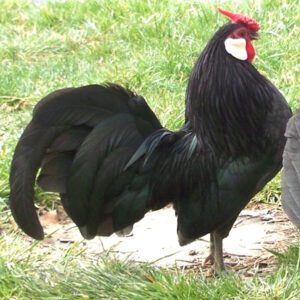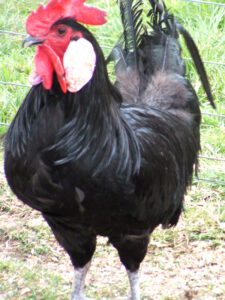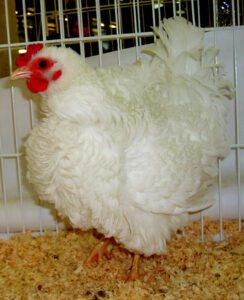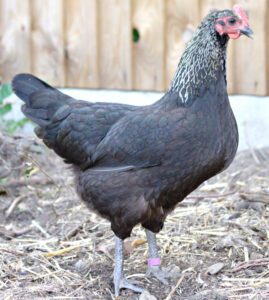Dutch Bantam chicken is a very old breed. It is also one of the true bantam chicken breeds, without any standard size. Dutch Bantam chicken is very popular today as an ornamental breed originating in the Netherlands during the 17th century.
The ancestors of this breed were picked up by Dutch sailors, who took birds from the East Indies for supplying eggs and meat during their journeys. Those earliest predecessors are thought to have been some of the earliest domesticated chickens, being domesticated from the jungle fowl in Indonesia. Dutch Bantam chicken was first shown in the United States in the early 1950s.
But its popularity did not take off until a second importation in 1969. The breed is recognized by both American Poultry Association and American Bantam Association. The Dutch Poultry Club recognized the breed by 1906. And the Dutch Bantam chicken was admitted into the American Poultry Association’s Standard of Perfection in the year of 1992.
Today the breed is still one of the most popular chicken breeds in its home country the Netherlands. The breed is also popular in the UK and Germany, and is gaining popularity quickly in the United States and South Africa.
Dutch Bantam chicken also has grown in popularity as exhibition poultry throughout the world. The breed is also known as Hollandse Kriel. Characteristics, behavior, temperament and full breed profile of Dutch Bantam chicken are listed below.
Dutch Bantam Chicken Characteristics
These chickens are among the smallest bantam chicken breeds. They have a high full breast, short backs and are upright little birds. Their wings are carried close to the body. The wings are fairly large in size and long. They are good fliers, mainly for their relatively large wings and light weight.
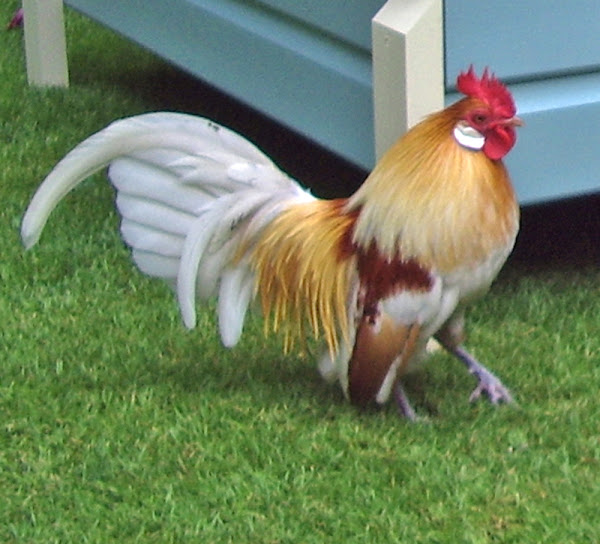
Their tail is full and well spread with well developed sickles. They have bright red colored single comb with five well defined, upright points. Earlobes are small and oval shaped and are white in color.
Their wattles are broad, medium in size and red colored. This chicken breed has unfeathered legs with four toes. The legs are of slate blue color (some varieties have other colors). Their skin color is white. Their beak is short, strong and slightly curved. Partridge pattern is the original type of plumage for the Dutch Bantam chicken.
But today, there are numerous color varieties available with different types of plumage. The color varieties include; Black, Silver Partridge (silver duckwing), Red Shouldered White (pyle), Golden Partridge (black red) and Yellow Partridge (yellow duckwing). On an average Dutch Bantam roosters weight about 0.55 kg and hens about 0.45 kg. Photo from Wikipedia.
Behavior/Temperament
Dutch Bantam chicken is friendly in nature and very easy to handle. It is not a cold hardy breed, so special care should be taken during the winter season. The hens are good layers of smaller sized white eggs.
They are very good setters, good broodies and are good protective mothers. As they have large wings and light weight, so they are good fliers. The chicks are very active. They do very well in confinement.
It is a great choice for the hobby farmers and backyard chicken keepers who want to raise bantam sized birds. Because it’s very friendly and have good laying ability. Review full breed profile of this chicken breed below.
| Breed Name | Dutch Bantam |
| Other Name | Also Known as Hollandse Kriel |
| Breed Purpose | Ornamental |
| Breed Temperament | Friendly, Easily Handled, Bears Confinement Well, Flighty |
| Breed Size | Bantam |
| Broodiness | Frequent |
| Comb | Single |
| Climate Tolerance | All Climates (not a cold hardy breed) |
| Egg Color | White |
| Egg Size | Small |
| Egg Productivity | Medium |
| Feathered Legs | No |
| Rarity | Common |
| Varieties | Black, Blue Cream Light Brown, Blue Light Brown, Cream Light Brown, Light Brown and Silver are the six color varieties of Dutch Bantam chicken recognized by the American Poultry Association. |
| Country of Origin | Netherlands |

